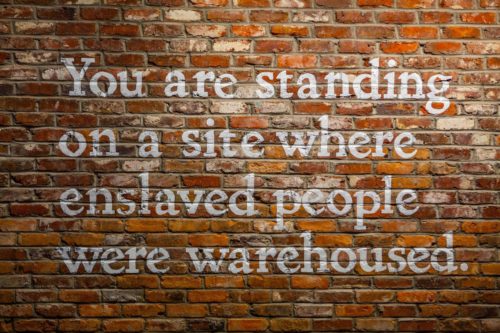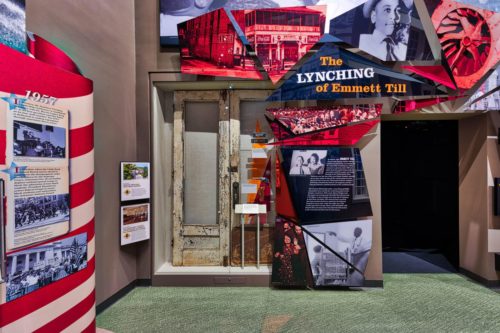Witness a history of racial injustice at two new museums in Alabama and Mississippi
Share
Explore Our Galleries
Breaking News!
Today's news and culture by Black and other reporters in the Black and mainstream media.
Ways to Support ABHM?
By Larry Bleiberg, Los Angeles Times
Shirah Dedman burst into tears when she saw her great-grandfather’s name on a coffin-sized box and a jar of soil.
Since childhood, the Los Angeles native had heard about a relative who had been lynched. Eventually, she learned that he had been arrested in 1912 in Shreveport, La., for passing a letter to a white woman.

The Legacy Museum: From Enslavement to Mass Incarceration, opened to the public on April 26, 2018, in Montgomery, Ala. The 11,000-square-foot museum is built on the site of a former warehouse where enslaved black people were imprisoned. (Equal Justice Initiative / Human Pictures)
When the case was dismissed for lack of evidence, a crowd grabbed him at the courthouse and strung him from a tree where he was shot repeatedly. When she saw the dirt recovered from the site, his murder finally become real….
Dedman, who lives in Oakland, is one of many who have been drawn to the Legacy Museum and National Memorial for Peace and Justice, which opened this spring in Montgomery, a former capital of the Confederacy.
The site has sparked a countrywide conversation about lynching. It has also attracted crowds to what has been called the nation’s most notable monument since Maya Lin’s Vietnam Veterans Memorial, which opened in 1982 in Washington, D.C.
Only a few months earlier, neighboring Mississippi, the state with the most documented lynchings, also opened a new institution devoted to racial struggle.
The new Mississippi Civil Rights Museum in Jackson recounts the history of protests, murders and martyrs in a region that a half-century ago was the front line in the struggle for equality.

Mississippi Civil Rights Museum, gallery Four: A Closed Society, “The Lynching of Emmett Till.” (Tom Beck / MDAH)
Exhibits explore the era’s flashpoints, from the race riot that followed the integration of the University of Mississippi; to the Freedom Summer murders of civil rights workers James Chaney, Michael Schwerner and Andrew Goodman, addressed in the film “Mississippi Burning”; to the assassination of civil rights activist Medgar Evers.
The $90-million state-funded museum complex, which includes a separate wing on Mississippi history, is the more comprehensive; the Montgomery site is designed to pack an emotional punch and make a political point. Together, the two sites, about 250 miles apart, complement and build on each other, providing a modern, clear-eyed view of some of the country’s darkest moments.
Read the full article here.
Read more Breaking News here.
View more galleries from the ABHM here.









Comments Are Welcome
Note: We moderate submissions in order to create a space for meaningful dialogue, a space where museum visitors – adults and youth –– can exchange informed, thoughtful, and relevant comments that add value to our exhibits.
Racial slurs, personal attacks, obscenity, profanity, and SHOUTING do not meet the above standard. Such comments are posted in the exhibit Hateful Speech. Commercial promotions, impersonations, and incoherent comments likewise fail to meet our goals, so will not be posted. Submissions longer than 120 words will be shortened.
See our full Comments Policy here.